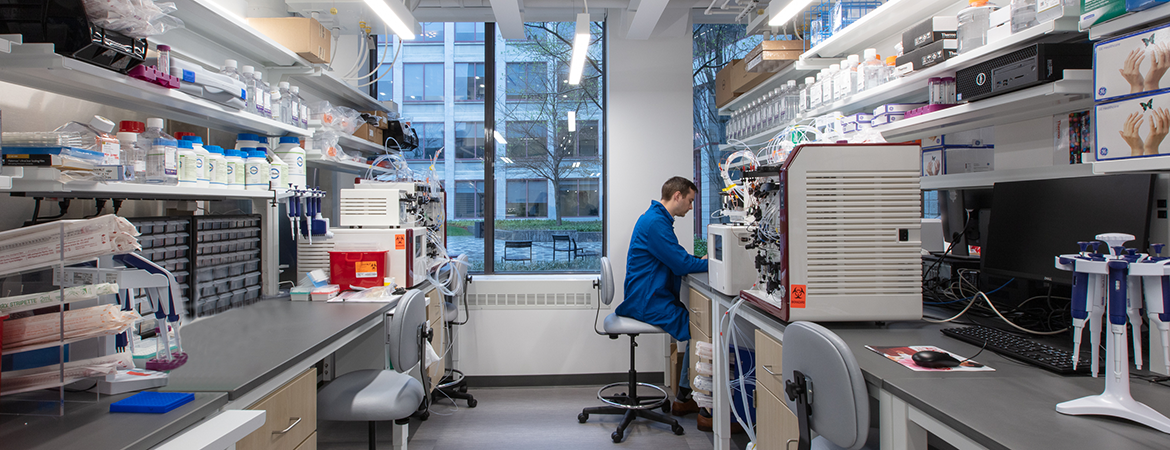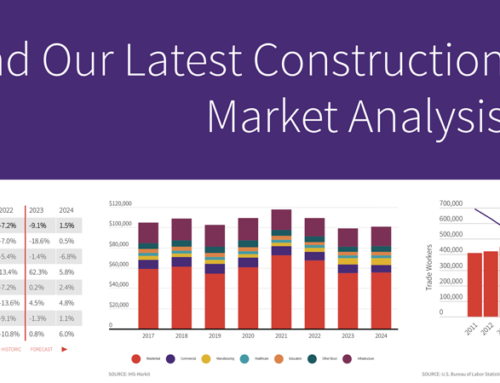The life science sector continues an unprecedented boom, limiting the available space solutions for companies in the market and resulting in intense real estate competition. This boom can be measured not only by the increasing number of new companies, but also by the increasing size and changing type of the spaces they require. It’s also being driven by the entry of more companies in the market space, and changes to the requirements in spaces life science companies are utilizing. These increased space needs are being driven by multiple factors, but two of the more important ones are 1) increased funding for start-ups and non-matured companies, and 2) the expansion of previously established companies. The real estate squeeze is also being driven by a higher volume of specialty spaces, including clean rooms, increased vivarium footprints, and larger process engineering capabilities on site. While the market shows no signs of slowing down, we continue to offer solutions for our clients to navigate these challenges.
So why is this happening? It could be that companies are switching from R&D phases to production phases faster than they have in the past; perhaps it is as a result of investor pressure or other market factors that are being driven behind the scenes; or it could be that established life science and laboratory companies have saturated the space, leading startup companies to find new ways of differentiating themselves. Whatever the reason, the fact remains that existing specialty spaces, and large lab spaces in general, are in limited supply and high demand, making them extremely challenging to find.
But this doesn’t mean there aren’t any options when it comes to real estate solutions. If you are involved in looking for a new and/or larger life science facility — whether as the owner, developer, landlord, architect, or investor — it’s worth noting that there are three basic types of lab space inventory available: existing lab space, spec lab space, and converted lab space.
Existing lab spaces previously used by another lab-based company bring several advantages. First, they typically already offer certain features and services that most labs need, such as systems for PH neutralization, lab gases, and water/wastewater treatment systems, to name a few. With pre-existing lab spaces, the amount of work required to customize the facility to the new company’s needs will be minimized, meaning it can be delivered more quickly and potentially at a lower cost. Having a landlord with previous experience managing a laboratory/life science building is another benefit. However, there are drawbacks to this approach. Existing lab spaces may need to be decommissioned, depending on what the space was used for previously, and existing conditions usually need to be reviewed for life cycle analysis (i.e., is the existing equipment aged beyond its useful life) — both of which require careful assessment for schedule and budget impacts.
On the other hand, a spec lab space is a brand-new facility that has been constructed from the ground up to provide laboratories and other life science spaces. The primary benefit of such a space is that you get modern building design and construction, including such features as vibration control, flexible floor plans, new electric services, new HVAC and exhaust systems, and state-of-the-art building controls, etc. However, careful review on landlord/tenant matrices are required to identify potential downsides, including increased time to delivery, required permitting processes, and upfront costs required to complete the developer’s speculative build-out. The need to assess the developer and landlord to ensure they can deliver and manage such a property is a critical decision point when dealing with spec lab spaces.
The third basic type of facility available to life science companies is converted space. This is a space or building that was previously used for another purpose, but that has been or is in the process of being converted to a life science use. As with existing lab space, this facility type offers a time advantage as the building itself is already constructed and likely brings with it some basic building systems. This can lead to lower costs compared to spec lab spaces, depending on the location of the facility and the extent of the conversion. This approach does have its drawbacks, however. There is high variability among conversion projects, meaning you have to carefully assess the actual time to delivery, which permits will need to be obtained, which building systems will need to be altered or added, whether or not existing elevators and corridors are big enough to accommodate large equipment deliveries, and whether or not the landlord is capable of managing a life science facility.
Regardless of which path you ultimately choose for your new life science facility, we highly recommend bringing your consultants in early! Not all spaces are the same, and project managers, architects, engineers, and/or contractors who have experience with these different facility types can bring valuable knowledge and lessons learned, which you can use to your advantage throughout the site selection process. These experts can also help you accurately assess your schedule and budget on an ongoing basis, helping you manage internal and external stakeholder expectations related to capital expenditure, delivery and occupancy dates, and more. They may even be able to identify creative solutions that save you time and money. For example, if you are a small but fast-growing company, it may make sense to lease a converted space for now, on a short-term basis, while planning to move into a right-sized spec lab space in the near future.
By being flexible and creative, and by retaining experienced consultants who keenly understand the benefits and drawbacks of each space option available to you, you can find just the life science facility you need to meet your company’s performance and growth goals — regardless of how competitive the market might be. The life science experts at Cumming are ready to assist you wherever you are in the process of addressing new space needs, and we are prepared to help you deliver a world class space solution to bring world class therapies to market.





